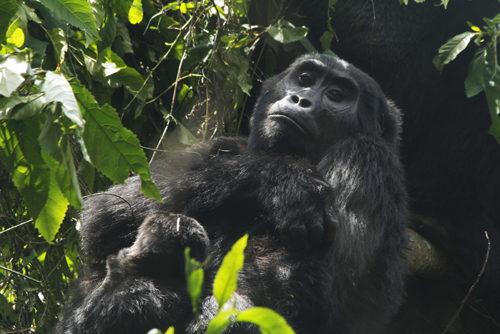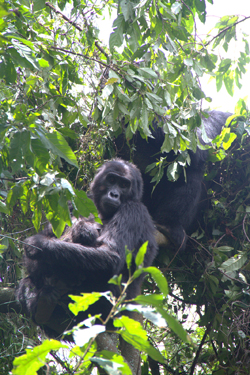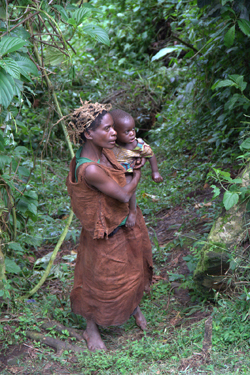In Search of the Vanishing Mountain Gorilla
Photos by Richard Wiese

Our own Tom Seligson spent last year producing an adventure travel series for ABC television: The show – “Born to Explore” which is on Saturday mornings -- took him all over the world, from Australia to Iceland. He says every journey has its special moments, but some adventures are more memorable than others. over the world, from Australia to Iceland. He says every journey has its special moments, but some adventures are more memorable than others.
One, in particular, was his trip to Uganda in search of the vanishing mountain gorillas. While there, he also encountered the Batwa Pygmies, a legendary tribe who’ve lived alongside the gorillas, and whose future is also under threat. Tom shares the highlights of this extraordinary adventure.
FT: How is looking for gorillas different from going on other safaris?
Tom: All safaris are interesting. But with gorillas, you’re dealing with a vanishing breed. There are only 700 mountain gorillas alive in the wild. About 300 live in Uganda’s Bwindi Impenetrable Forest. Seeing one is a privilege.
FT: They must be hard to spot?
Tom: Not necessarily. The guides track their movements from day to day. They have a pretty good idea about where to find them. Reaching them is another matter.
The Bwindi Impenetrable Forest lives up to its name. It’s steep and overgrown. The guides often have to clear a path  with their machetes. with their machetes.
FT: How close can you get to the gorillas?
Tom: Many of the gorillas in Bwindi are habituated to humans. We got as close as thirty feet. But you don’t want to get too close. The Mountain Gorillas share 98% of our DNA. They’re susceptible to the same ailments – colds and flus – that we are. Protecting them from us is a major concern. Left to their own devices, they’ll walk right through some of the local lodges; I know they’re often seen at Sanctuary Resorts, which is in the forest.
FT: What about the tribe of pygmies that also lives in the forest?
Tom: They are extraordinary people. Very friendly and welcoming. They’ve always lived in tree houses and huts. Though they’d like to remain in the forest, unfortunately the government has mo ved many of them out. ved many of them out.
They think this is the best way to save the gorillas, even though they’ve lived right alongside one another for generations. (Photo right is of Tom holding a young boy from the tribe).
FT: What will happen to them?
Tom: Many now live in simple huts right outside the forest. The children are fine with it; it’s their parents and grandparents who want to go back. They’re afraid their culture will disappear.
FT: Sounds like if you want to take this trip, you’ll better do it soon.
Tom: That’s right. Believe me, it’s worth it. This is one of those trips you never forget.
|

